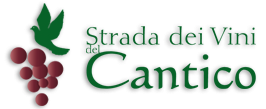Italian Wine Museums Appeal to the Intellect, but Not the Palate
TORGIANO, ITALY — It’s not easy to describe something that appeals to the senses in cerebral terms. Conception and perception are different, which is why wine museums can be disappointing. They may illustrate rituals and significance of wine, but they are unlikely to convey a visceral sense of just how fermentation transforms grape juice into something worthy of veneration as well as enjoyment.
“Vinum Nostrum,” an exhibition showing through April at Palazzo Pitti in Florence (www.uffizi.firenze.it/palazzopitti), comprises a fascinating selection of artifacts relating to the production, storage and consumption of wine in early Mediterranean civilizations. It also demonstrates some of the limits of traditional museum presentation.
The items displayed are rare and intriguing; many of them are also beautiful. The earliest is a simple, tulip-shaped wine jar made in the sixth millennium B.C. in Transcaucasian Georgia, where viticulture was born. Next come intricately decorated vases and chalices of Hellenic origin or inspiration, portrayals of inebriated satyrs and Dionysian libations, depictions of Bacchanalia, ancient Roman bas-reliefs of wine shops, and a number of winemaking implements.
But visitors’ perceptions of these magnificent items is solely intellectual, and also somewhat passive. Because wine appeals mostly to taste and smell, to be offered only a view of the subject is inevitably reductive.
Granted, the Palazzo Pitti event is a temporary exhibit. But even permanent wine museums — and Italy has plenty of them — rarely transcend the 18th-century “cabinet of curiosities” approach: a collection of equipment, bottles, labels and images.
Yet with the technology now available, it should be possible to provide a more rounded, engaging experience. There’s a small Truffle Museum (www.museodeltartufo.it) in San Giovanni d’Asso, south of Siena, for instance, that has not only lined up a comparative truffle tasting, but also harnessed special equipment to create an “odorama,” to give visitors an idea of what it’s like to be a truffle hound.
So surely it should be possible to do something similar with wine, devoting a section to sensorial initiation. The secret workings of yeasts, and indeed molds, could be revealed to the nose; the difference between a young and an aged wine made from the same grapes to the palate.
The recently opened WiMu Wine Museum in Barolo (www.wimubarolo.it), the birthplace of Piedmont’s most famous wine, seemed set to embrace the challenge and has put on a show both learned and fun. Situated in Castello Falletti, which towers over the village of Barolo, it occupies three spiraling floors, plus a basement housing a large wine shop that features the region’s finest bottles. Most promising of all, layout and display were entrusted to the Swiss set designer François Confino.
Alas, the outcome falls short. The museum has gone all sensorial at the expense of serious content. Moreover, the senses elicited are largely hearing and sight, both of which do play a role in wine appreciation, but not primary ones. Indeed, the different soundtracks that accompany each room are so invasive that visitors are likely to speed up their tour and make for the exit, to find solace on the ample terrace overlooking vine-clad hillsides.
The one section that is both effective and entertaining is set up like an Art Deco movie theater. It offers clips from films that illustrate changing rituals and roles of wine consumption in our own times.
All in all, though, WiMu lacks a coherent narrative thread, and seems to want to impress rather than inform.
By contrast, a well-ordered narrative underlies the essentially traditional Museo del Vino in Torgiano, near Perugia in central Italy (www.lungarotti.it). Set up in 1974 at the behest of the Lungarotti family of winemakers, over the years it has been enriched, enlarged and improved under the discerning direction of the art historian Maria Grazia Lungarotti.
The Torgiano museum combines excellent display with a sense of purpose. In each room a number of fine and often rare objects illustrate a particular subject area, suggesting connections with other themes that enrich the overall picture.
The first room makes good use of maps and written accounts to help explain the ancient wine jugs, amphorae and elegantly decorated drinking vessels that illustrate the origins of wine growing and trade in the Mediterranean area. From here the focus narrows to viticulture in the local Umbrian region during the Middle Ages, which in turn leads into accounts of the annual cycle of vine growing, and the time-honored techniques of winemaking.
Throughout the exhibition, wine myths recur in various guises, showing how the magic of fermentation has always spurred the imagination. The underlying beliefs and practices are reflected in a magnificent collection of decorated ceramics from the 16th to the 20th century, many of them from the neighboring town of Deruta.
Though sensorial experience is limited to sight, the wine museum in Torgiano is still Italy’s best. And the Lungarottis have created a comfortable hotel with a good restaurant, Le Tre Vaselle (www.3vaselle.it), to persuade visitors to extend their stay in the area. The solution is obviously to enjoy some empirical experience among the rolling vineyards and at the Lungarotti winery, and then visit the museum.
Fonte: New York Times
Autore: Kate Singleton





















